Live music show on Saturday night hosted by Peter Sinclair.

HOW long does it take to produce a weekly television show? If it is C'mon, the NZBC'a latest pop show, then the answer is-a week. Not just a five-day week either; the producers of the show work a full seven days.
The story of a C'mon programme begins on Monday morning when producer Kevan Moore meets with the designer, Anthony Stones, who is responsible for set designs and costumes. Technical producer Bryce Torrens, who looks after cameras, sound, lighting, and technical facilities for the show, the choreographer Dorothea Zaynes, and floor manager Alistair McFarlane, who is responsible for all the artists and product on crew in the studio. Among topics discussed at this meeting are camera angles, lighting effect, where artists are to stand, what scenery is to he used, and how the whole show will be put together.
On Monday afternoon another meeting is held, this time with Jimmy Sloggett, the musical Director, the members of the resident band and the artists appearing in the show. This meeting a not concerned with the show coming up at the end of the week, but with the music for the following edition.
During Tuesday and Wednesday. the ballet dances are carefully rehearsed and a script is made up in readiness for a "dry run" rehearsal on Thursday.
Actors rehearsal, a chalk diagram of the proposed setting is marked out, and dancers go right through the show is and will appear on television, familiarizing themselves with the set and the way they must move about it.
Any shortcomings in the script or the way the show was planned will become obvious at this rehearsal, and the following day the script is given a final tidy-up. At the some time, the sets for the show are assembled in AKTV-2's Studio 1, and the automatic lighting sequences are arranged.
Saturday is the big, day for C'mon. All concerned with the show start at 10:30 in the morning. and work through until 8 at night. The whole show is rehearsed until artists and crew know precisely what they must do, and where they must be at any given time. Late on Saturday afternoon, there is a complete dress rehearsal. After a tea break the live audience of 150 teenagers is brought in and the show goes on the air punctually at 7p.m. C'mon is transmitted live through AKTV-2; at the same time, videotapes are taken for later showing on the other three channels.
On Sunday the artists for the next C'mon show get together to pre-record the numbers they will he doing on the show, and so the whole cycle begins again.
Although it is produced in Auckland, the show is competed by a Wellington announcer, Peter Sinclair, who also competed the popular Let’s Go series. Because of his radio commitments in Wellington, Peter is flown from Wellington to Auckland and back each weekend.
Kevan Moore, who recently shifted to Auckland from Wellington, is a veteran of pop and light entertainment production, having produced Let's Go and Cameras on Campus. By and large he is pleased with C'mon, although there has been, he told me a,
disappointing influx of new talent. This he feels is because inexperienced performers cannot reach the high standards demanded for C'mon.New artists for the show are auditioned by Kevin, although some established performers whom he already knows and has worked with are included without audition.
Some shortcuts, such as mounting heavy instruments like drums and an organ on wheels, had been used to make the show ran more rapidly, but the main reason for the show's pace, Kevin feels, is simply the amount of rehearsal that goes into it.
The production crew for C'mon numbers 14, excluding Kevan. There are three cameramen, a floor manager with three assistants, a technical producer, two lighting technicians, a sound operator and assistant, a script assistant, and a vision switcher, whose job it is to decide which picture from the three cameras in the studio shall be broadcast at any given time.
All the sets and designed and assembled by the AKTV-2 design department, under the supervision of Anthony Stones, who also designed sets for In the Groove and On the Beat Side. He feels C'mon has a pleasant programme to design for as he has much more of a free hand with it.
C'mon is a fun program,he said.It is fun for a designer, as you can indulge yourself. This last year has been by better for pop shows, because a whole form of art has grown up around pop music.The sets for C'mon have all been done in what Anthony describes as
a mixture of op art and art nouveau. Several unusual techniques are used, including the projection of op art designs on to the blank back wall of studio one. These designs are drawn on paper, and are then transfered photographically to glass plates, which are inserted into a slide projector. By using this and associated techniques, it would be possible to make as many as 50 or 60 set changes during a half-hour show. Shortly the NZBC will be getting a special projector which will make it possible to...First published in the New Zealand Listener, 1 May 1967.
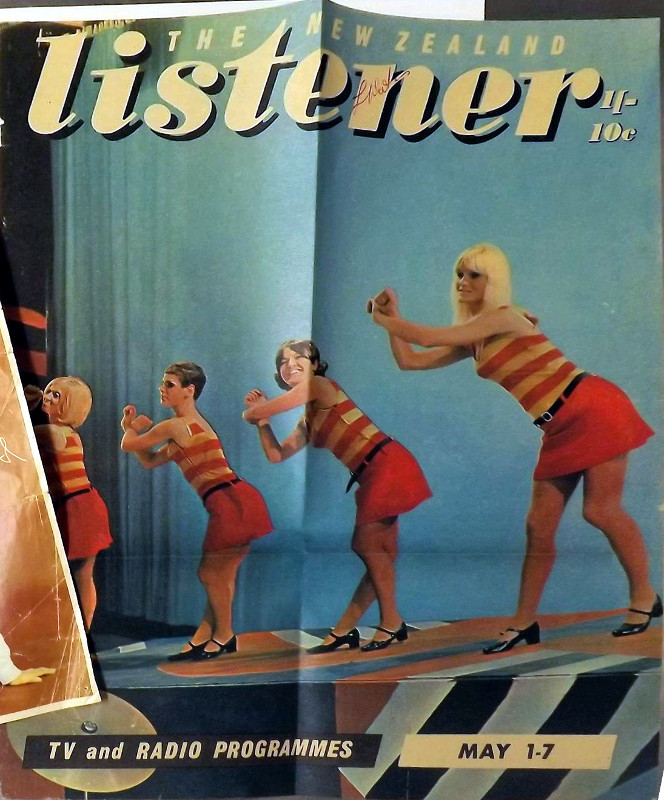
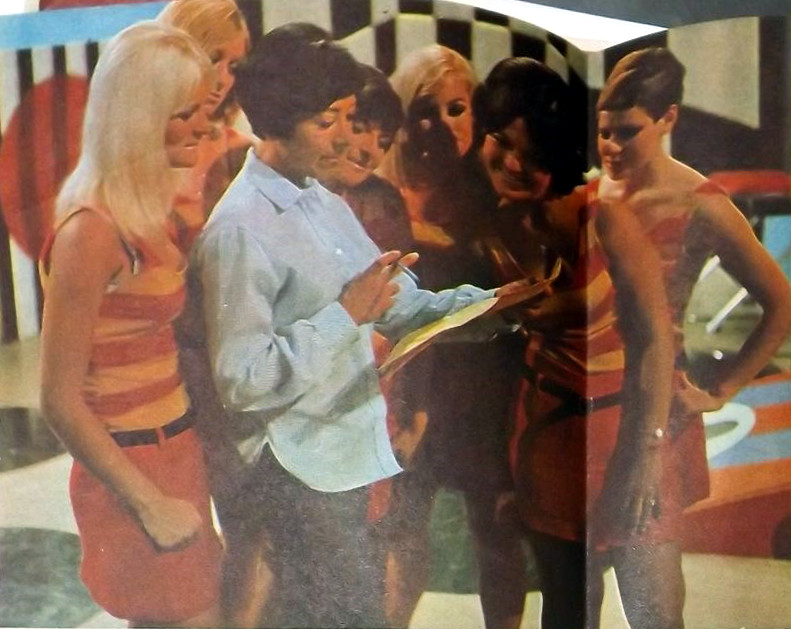
Choreographer Dorothea Zaynes and the C'mon Go-Go dancers discuss a routine during filming.
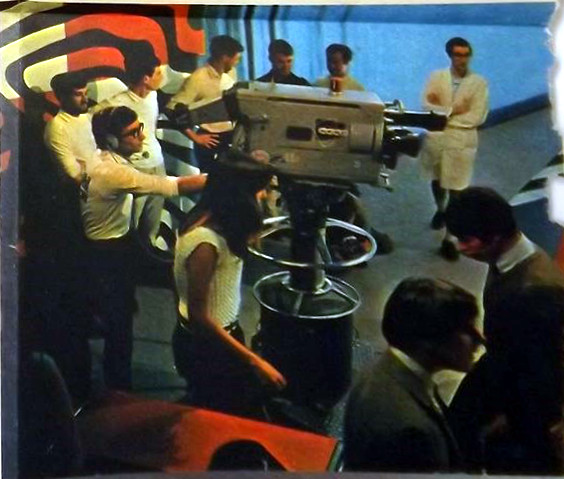
Cast and crew during filming/rehearsal.
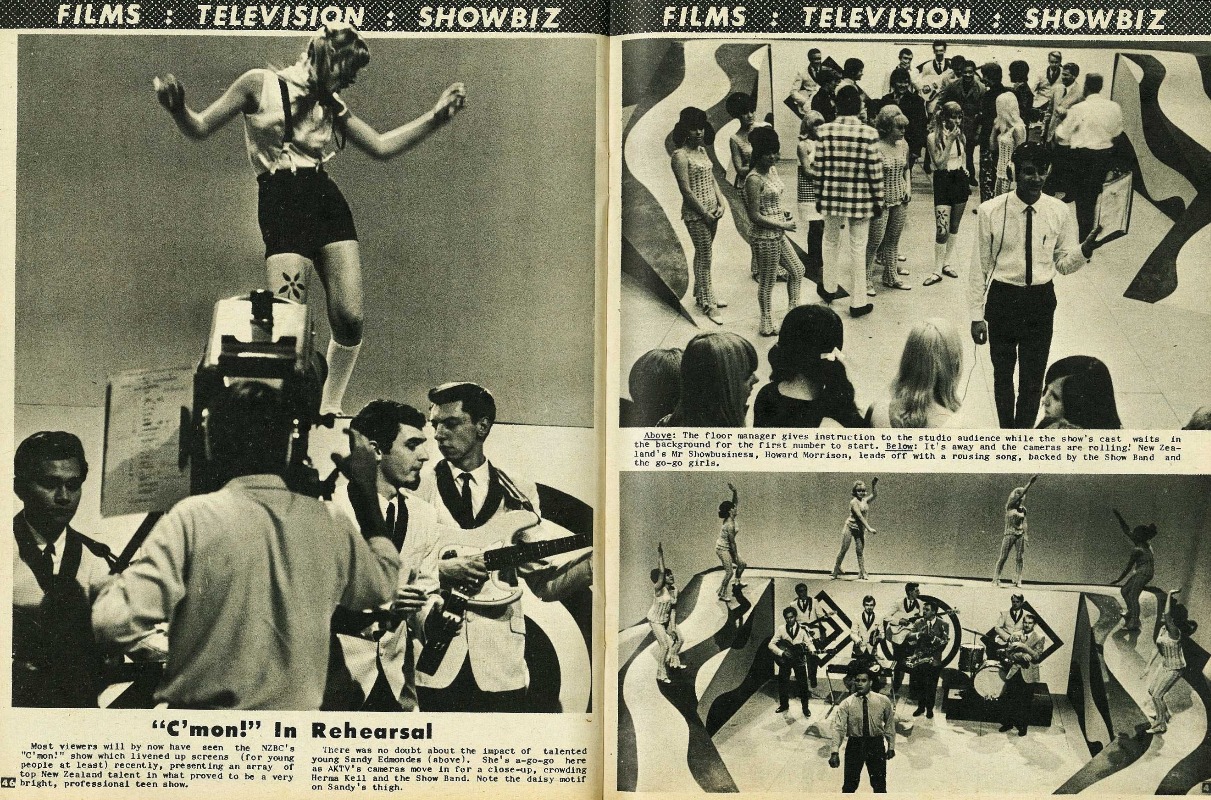
Nelson Photo News, No 74 : December 10, 1966
The Go-Go Going show
First published New Zealand TV Weekly 30 July 1967
The next few weeks will see the final wild gyrations, the last spurt of musical and vocal endeavour from the host and participants of C'mon If it achieved little else, it at least carries with it New Zealand television’s honours as the most-talked- about, most favoured and most criticised teen-age show yet.
Neither in its presentation - nor in its reception by viewers - did it brook half measures. You either liked it or loathed it. All of its many facets brought forth either spontaneous words of praise- or trenchant criticism.
But for all that, if any TV presentation can so move New Zealand’s younger set that they feel compelled to put pen to paper and air their. opinions, surely it has justified its screening.
Yet C’mon! did more than that. It demonstrated that talent in the realms of pop music exists, almost abounds in New Zealand; that the slick, up-to-the-minute presentation can be seen here without the expenditure of overseas funds; and that the off-stage craftsmen assembling the components of a weekly, 30-minute spectacular such as this can evolve an end-product with class.
It’s only to be hoped that producer Kevan Moore and his team have achieved such a musical breakthrough with this jet-speed prototype that it is considered airworthy enough to be flown again at a later date. Too many valuable lessons must have been learned with C’mon! for the format to be permanently shelved.
Seems everyone thought the show wouldn't be back after the first year, but it actually went on for another 2 years.
Souvenir Programme from the C'mon tour
Looking back
When C’Mon celebrated it 50th anniversary in 2016, RNZ's Access All Areas spoke to the show’s original producer Kevan Moore, go-go dancer Barbara Dean (now Fraser), drummer Bruce King, singer Shane and in London Mr. Lee Grant:
The Album of the show:
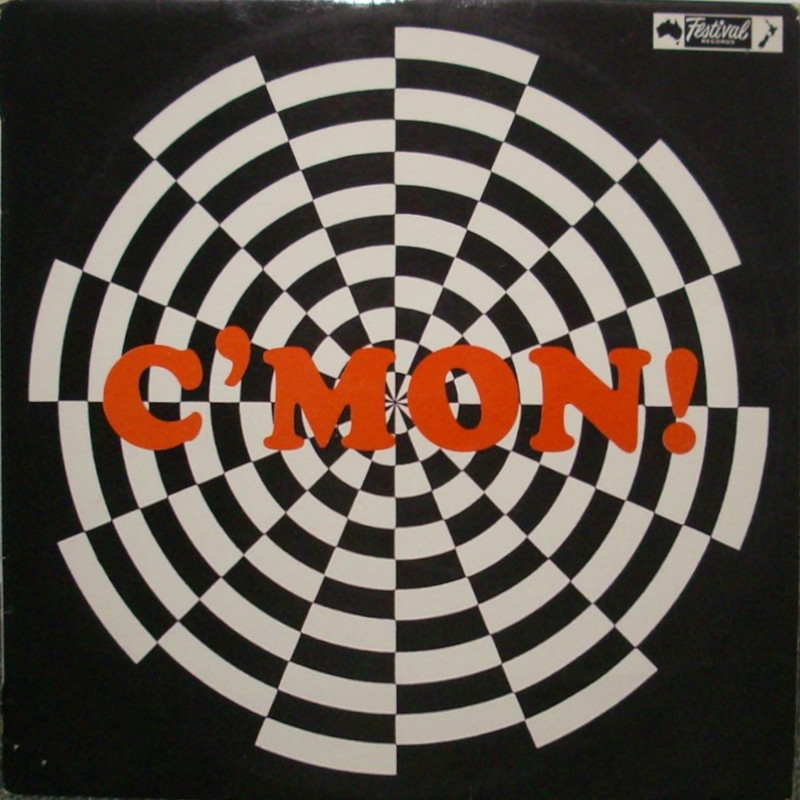
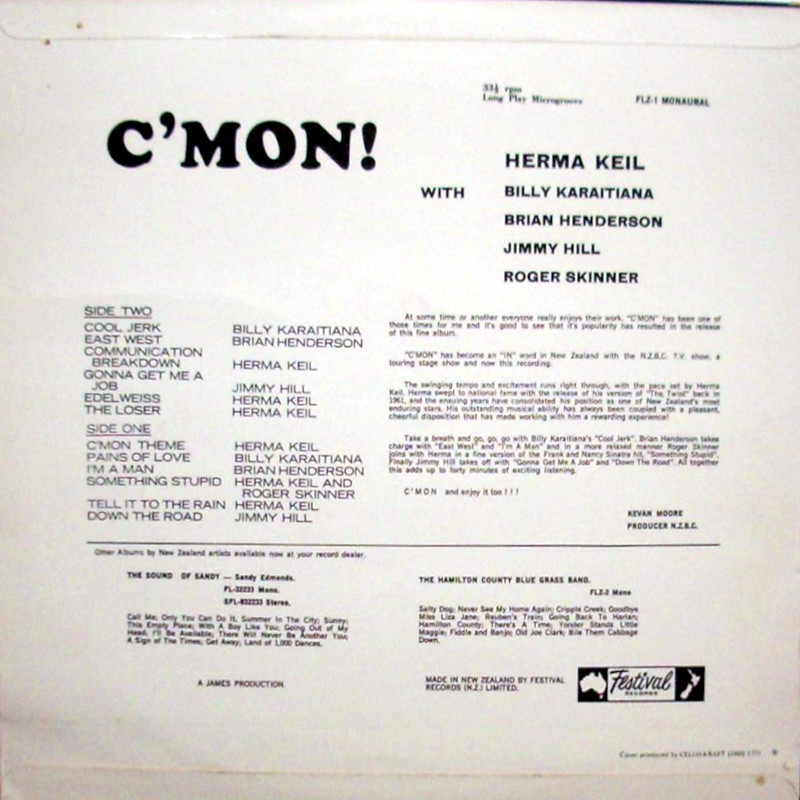
Featuring music by Herma Keil, Billy Karaitiana, Brian Henderson, Jimmy Hill and Roger Skinner
LP label Festival FLZ1 mono NZ press 1967
49 years later a CD of acts from the show was released
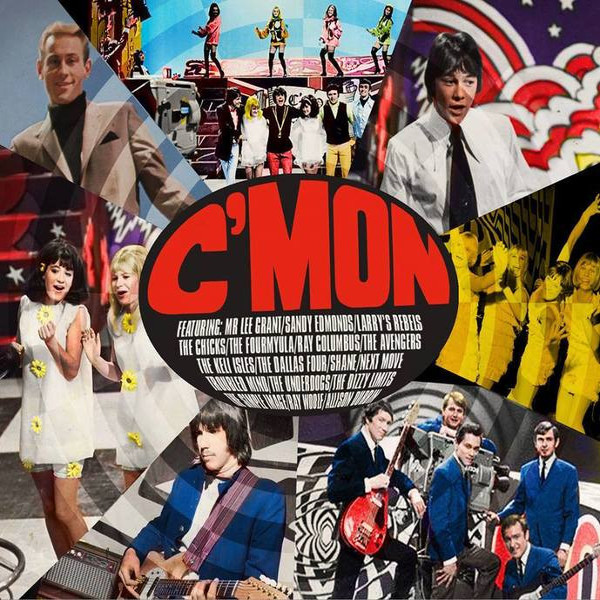
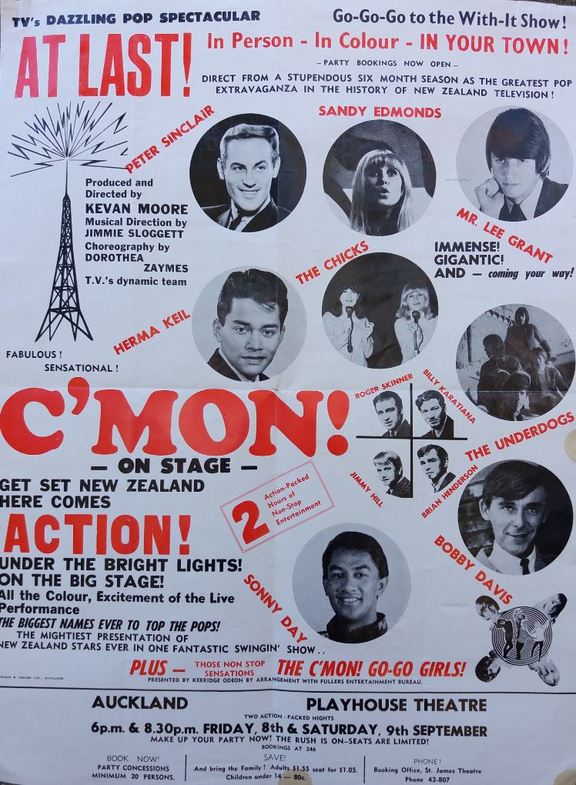





Comments powered by CComment